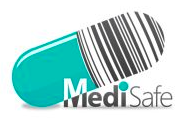 “Is there a generic version of that?”
“Is there a generic version of that?”
 “Is there a generic version of that?”
“Is there a generic version of that?”
We’ve all been there. Prescription drugs are often expensive, and if you can save money, why not opt for the generic? Yet few consumers understand that generics are not just cheaper versions of costlier brand-name drugs — there can be real differences in generics’ manufacturing, labeling, and potential for side effects. It’s time pharmaceutical companies shed light on these important differences and better educate physicians, pharmacists, and consumers on the benefits of choosing the brand-name drug.
The Big Picture on Generics
To the average consumer, a generic drug is just a copy of a brand-name drug — in other words, “same drug, different price.” However, while generics are required to have the same active ingredient(s), they are not the exact same product.
A drug patent protects a drug’s components for 20 years. The FDA requires generics to be bioequivalent, or acting in the body with the same strength and availability as the original drug. However, generic manufacturers are not required to submit to the stringent clinical testing for safety and efficacy that the original branded drug must undergo. In fact, the only testing done occurs in healthy individuals. The manufacturing processes, the source of the chemicals, and the inactive ingredients can be significantly different for a generic drug.
Another major difference is that the FDA allows a generic drug to be as much as 80 percent below or 125 percent above the original drug’s range of bodily absorption. Therefore, even different generic forms of the same drug can vary greatly. This fluctuation can have a significant impact on the efficacy of a drug.
Additionally, generic drugs can lack information on side effects. Out of 1,040 generic drugs, 68 percent listed side effects differing from their brand-name equivalents due to current rules that mandate generic drug manufacturers cannot update warning labels, even if they are aware of an issue, until their counterpart drug updates its side effects warning. However, a new proposal by the FDA would give generic manufacturers more autonomy in this.
Since generics vary so greatly, unknown or unlisted side effects could occur. This is particularly important for those taking multiple drugs to consider, as drug interactions can occur, and it’s important for patients on Medicare, who are supplied with generics almost exclusively.
Benefits of Brand-Name Prescriptions
While generic medications have a place in the market, there are considerable benefits to utilizing brand-name medications. The primary benefit of branded medication is the extensive testing and regulation involved in the research and production before the drug ever hits the market. While branded drug companies are held accountable by regulating entities like the FDA, just like the generics, they invest more in inspecting everything from drug manufacturing facilities to the documentation of side effects.
Beyond that, branded pharmaceutical and biotech companies also fund the research, development, and discovery of new drugs. However, the amount of money put into the development of new medication is directly related to the sales of current products, so when fewer brand-name medications are sold, there are fewer funds available to invest back into research and development.
The knowledge branded drug manufacturers build through their research and development phases also trickles down to patients, and this education can enhance outcomes for consumers.
How Pharma Companies Can Attract Consumers
Today, nearly 8 in 10 prescriptions filled in the United States are for generic drugs, an increase fueled by economic struggles and a push from insurance companies for physicians to prescribe generics over branded medications. However, pharmaceutical companies can regain consumer attention with just a few strategic marketing adjustments:
- Educate Consumers, Pharmacists, and Physicians: Most consumers — and some medical professionals — are unaware of the differences between generic and brand-name medications, aside from the cost. Use marketing to highlight key disparities between brands and generics, especially emphasizing the testing backing the branded medication. Help them understand the price difference between brands and generics to see what the extra cost buys them. Teach consumers how to ask their doctors what the differences in the forms of medication are or to do the research themselves on the FDA website.
- Highlight R&D: Few people realize where the funds come from for pharmaceutical research and development. Initiate a campaign highlighting the funds your pharma company invests into discovering new medications so consumers and doctors can see where some of the money they spend on branded medication is actually going.
- Take a Cue from Consumer Product Companies: The pharma industry really hasn’t taken full advantage of the concept of branding the way consumer product companies have. Many consumers are brand-name loyal to products like shampoo, makeup, toilet paper, and laundry detergent, regardless of their pricing in comparison to store brands. Pharma companies need to use this approach, helping consumers “fall in love” with their brand-name medications and/or the companies that back them. If consumers develop a preference for brand names and the benefits they’re associated with, they’ll be more willing to spend a little extra for them.
There has long been a struggle between brand-name and generic medications. Through education on the differences between the two and the implementation of a few marketing changes, branded drug manufacturers can slow the erosion of their sales.
(generic drugs / shutterstock)







